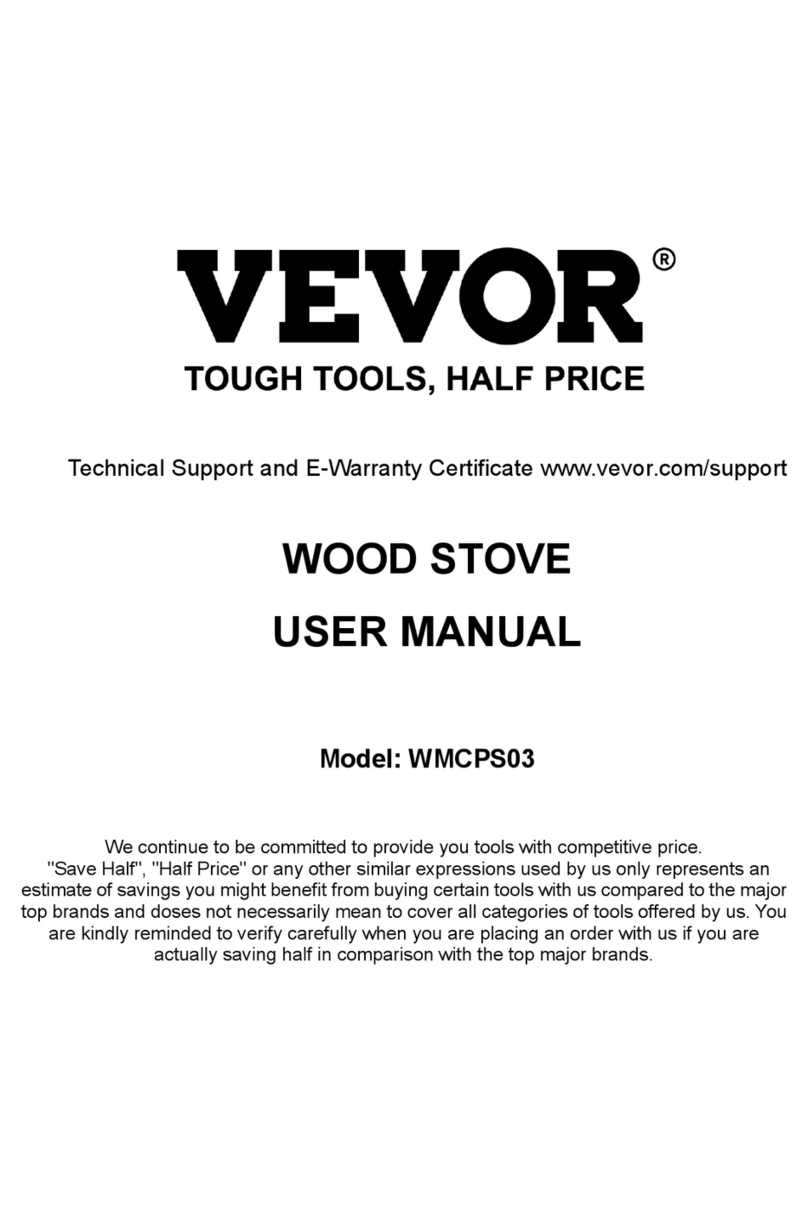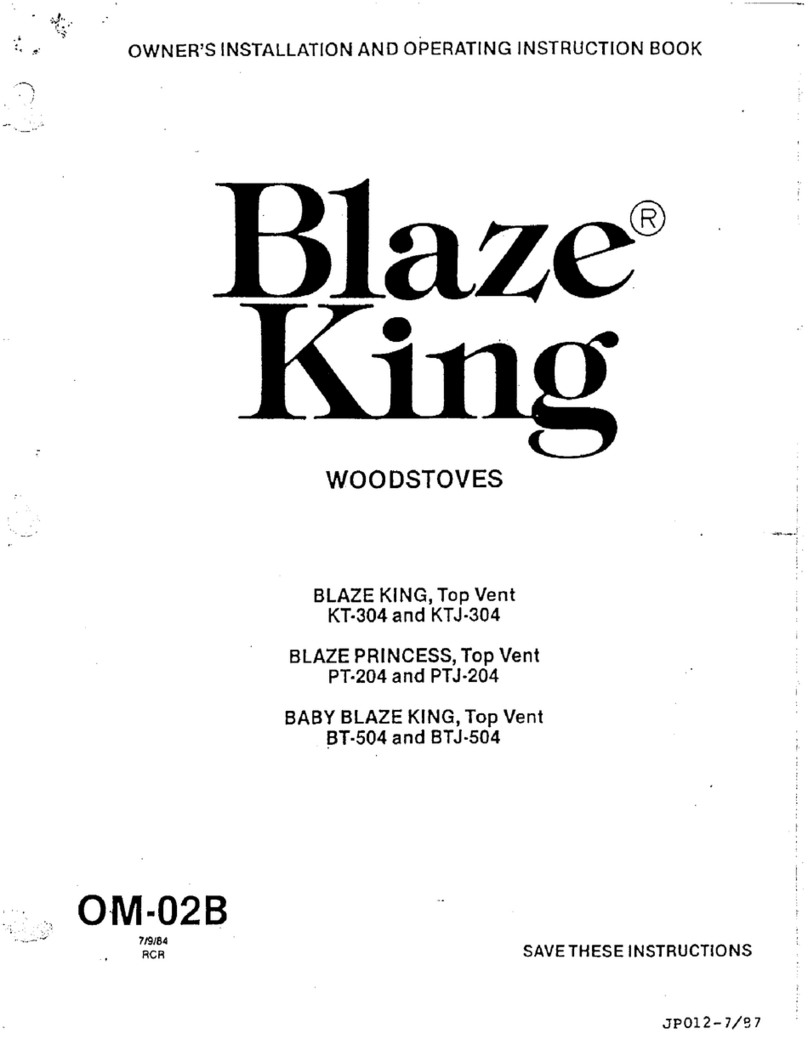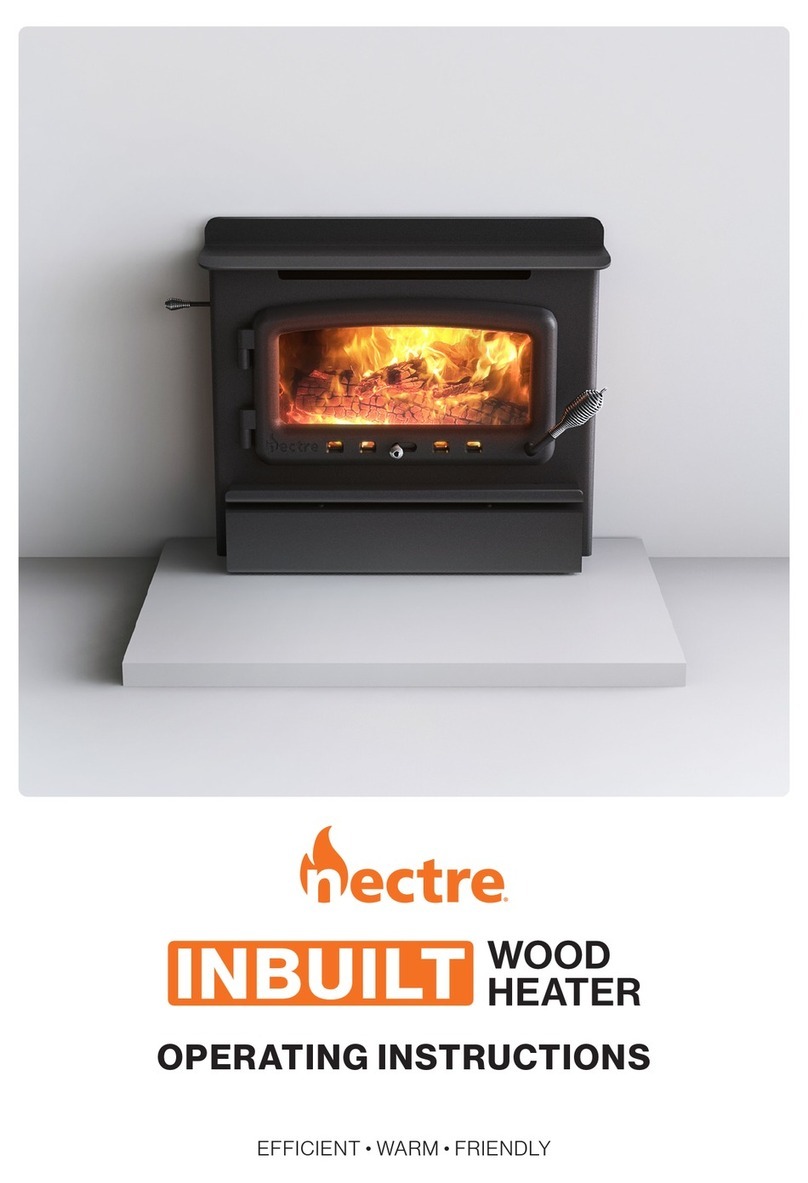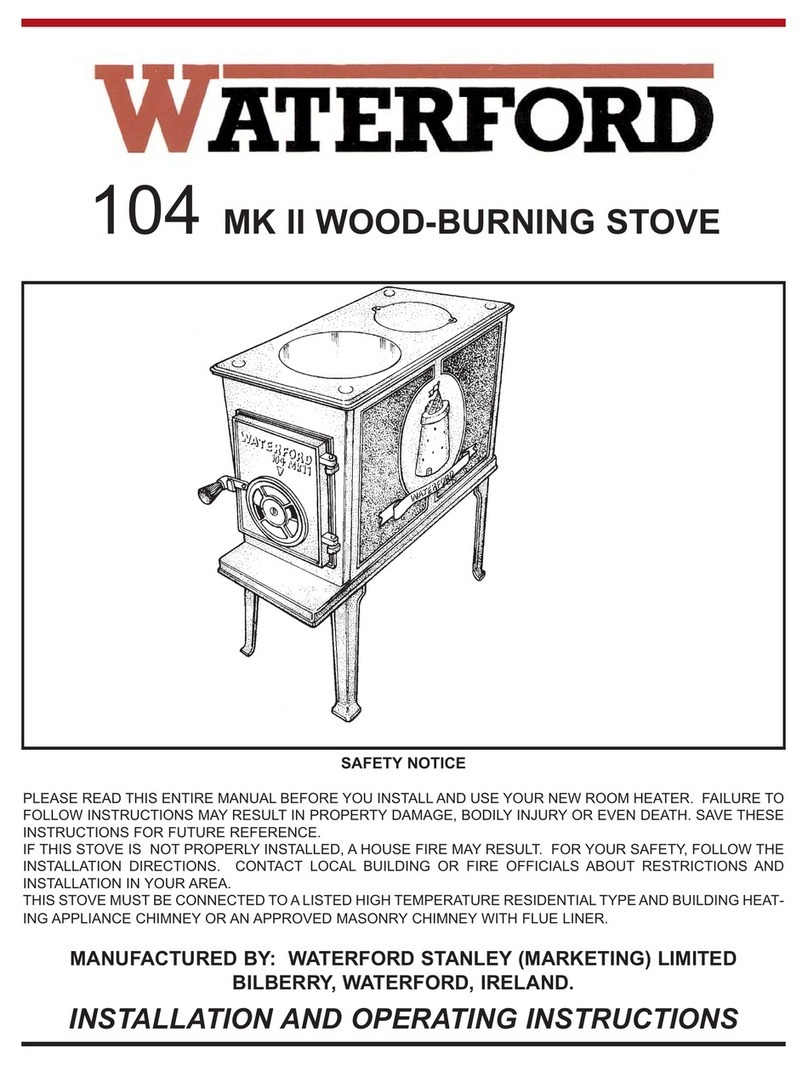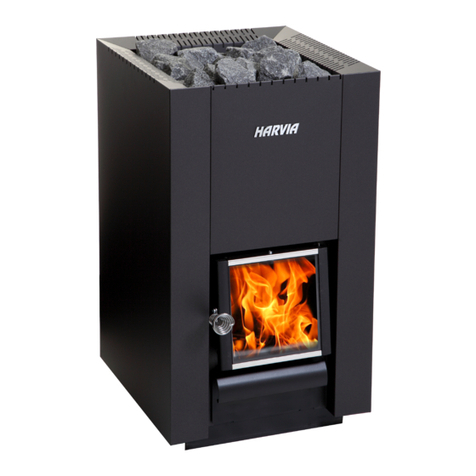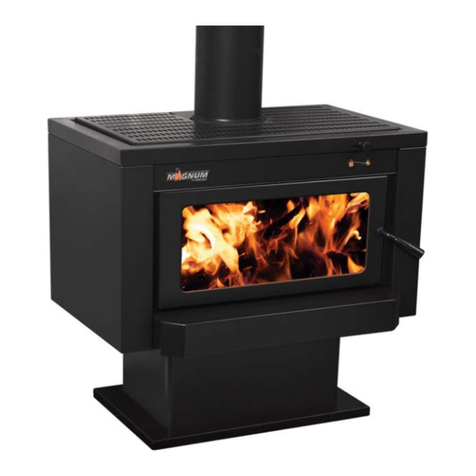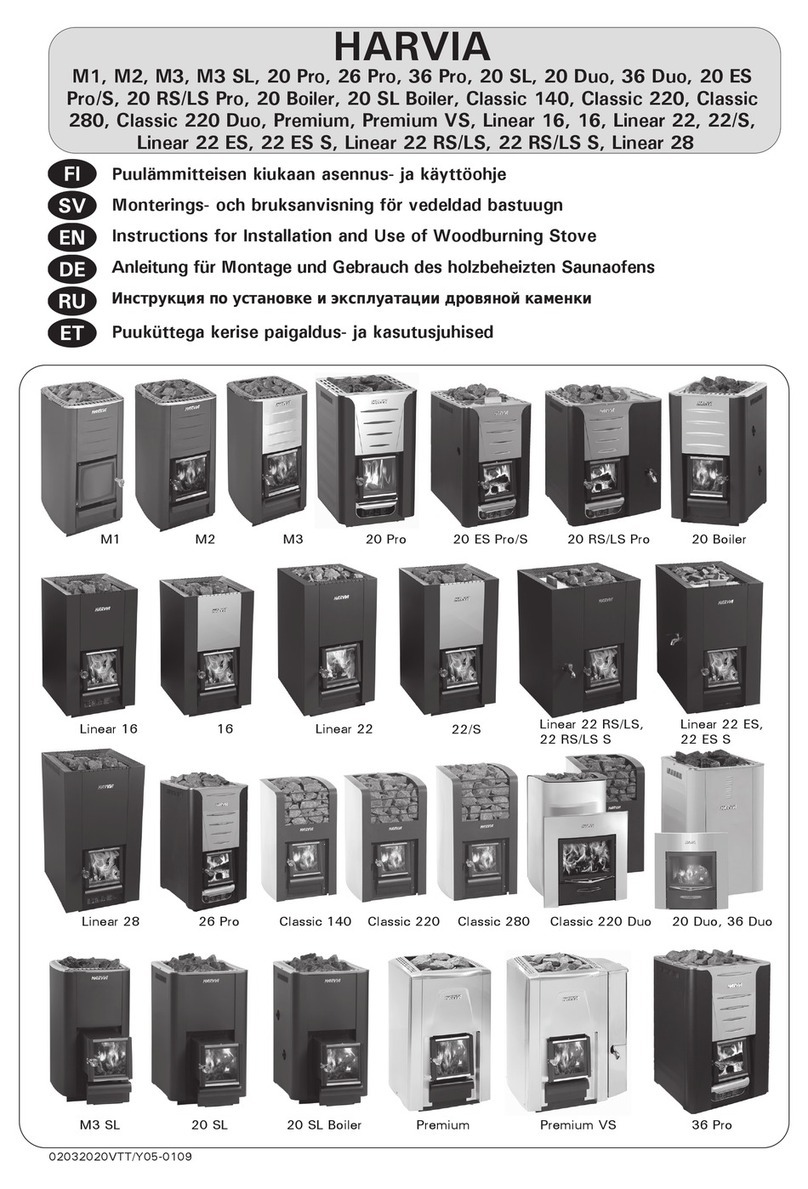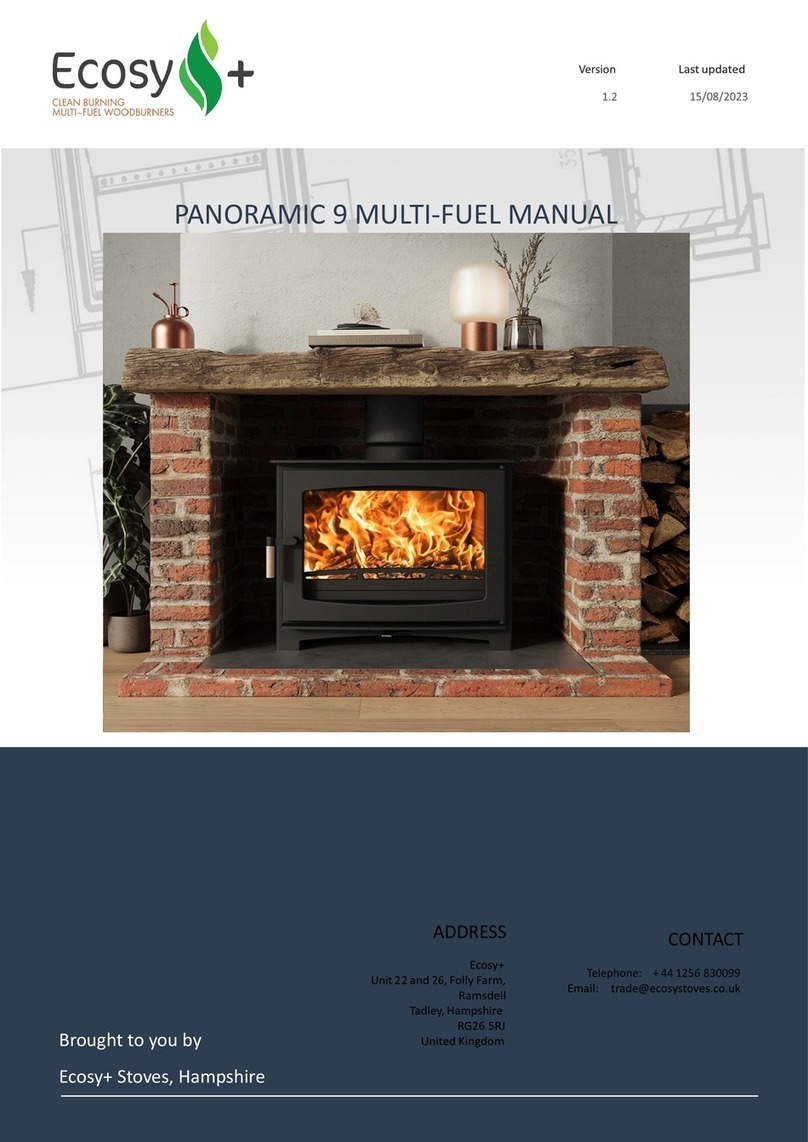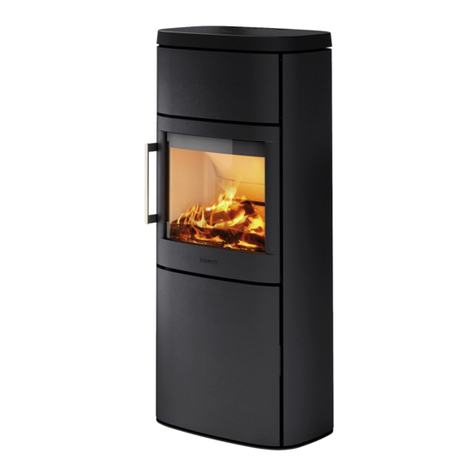
TFG Stoves FDC Issue 01 04/15
6.9 Cleaning
Glass: Despite the air wash system provided, the glass will still need cleaning from
time to time depending on the fuel quality and burning rates used. Never clean the
glass when the stove is hot. Always use a proprietary stove glass cleaner and follow
the instructions provided with the product. As an alternative, use a wet cloth with some
wood ash but be very careful to use very clean ash so as not to scratch the glass.
Stove body: The stove body simply needs to be wiped over with a dry lint free cloth
from time to time. Occasionally the paintwork may need re-furbishing. Only use high
temperature paint recommended by your stove retailer.
Cast iron firebox liners: Brush the firebox liners clean from time to time to check the
integrity of the cast iron. The liners are made from durable cast iron and should give
many years of service but may require replacement dependant upon the type of usage
experienced. The liners can be repainted as required but due to the high temperatures
achieved in the stove the paint does not have much effect before being burnt off.
Fuel Retainer: This should be brushed clean from time to time to remove any build up
of soot. This part can be repainted as required but due to the high temperatures
achieved in the stove the paint does not have much effect before being burnt off.
Baffle: It is important to check the top of the baffle plate for any build up of soot and
ash on a regular basis when in use and after a long period of no use. From time to
time remove the baffle plate and check that the spigot and flue way entrance is clear
of debris
6.10 Fuels
The appliance has been tested and approved to burn dry, well-seasoned logs. This is
the recommended fuel. For all other fuels please contact the manufacturer for advice.
Warning! - Petroleum coke fuels or household waste must not be burnt on this
appliance. Should any difficulties arise over fuel quality or suitability, consult your local
approved fuel merchant.
6.11 Notes for Wood burning
With a full load of wood and burning at a moderate rate, the stove will typically need
to be refuelled approximately every hour but this is entirely dependent on fuel quality
and burn rate. Wood can be stacked in the stove but care must be taken that logs do
not touch the baffle or glass. Wood burns most efficiently with the primary air control
closed and the secondary (air wash) control open. Carefully adjusting the secondary
air control and fuel load will control the burn rate of the stove. Always make sure
that flames are visible above the fuel bed after re-fuelling for cleanest burning.
Open the air wash fully for 3 to 5 minutes or until the logs have caught alight
and full flames are visible above the fuel.
Wood burns best on a bed of ash and it is therefore only necessary to remove
surplus ash from the stove occasionally. If the grate is completely clear, place a
few handfuls of ash into the slots in the grate to help the firebed build up.
Burn only dry, well-seasoned wood, which should have been cut, split and stacked
(under protection from rain) for at least 12 months with free air movement around the
sides of the stack to enable it to dry out. Burning wet or unseasoned wood will create tar
deposits in the stove and chimney and will not produce a satisfactory heat output.
Wood that is not properly dry (‘dry’is considered to be less than 20% internal
moisture content) uses up energy from the burn process to evaporate the water
inside the wood thus creating very poor conditions for combustion. The main
cause of combustion problems with wood stoves is caused by excessively damp wood.
Wood can appear perfectly dry on the outside but still contain 40-50% water on the
inside. A moisture meter can be purchased from your retailer if you wish to check the
suitability of your wood.



















